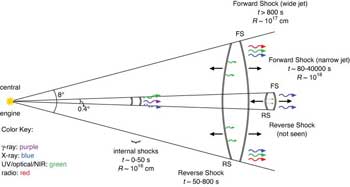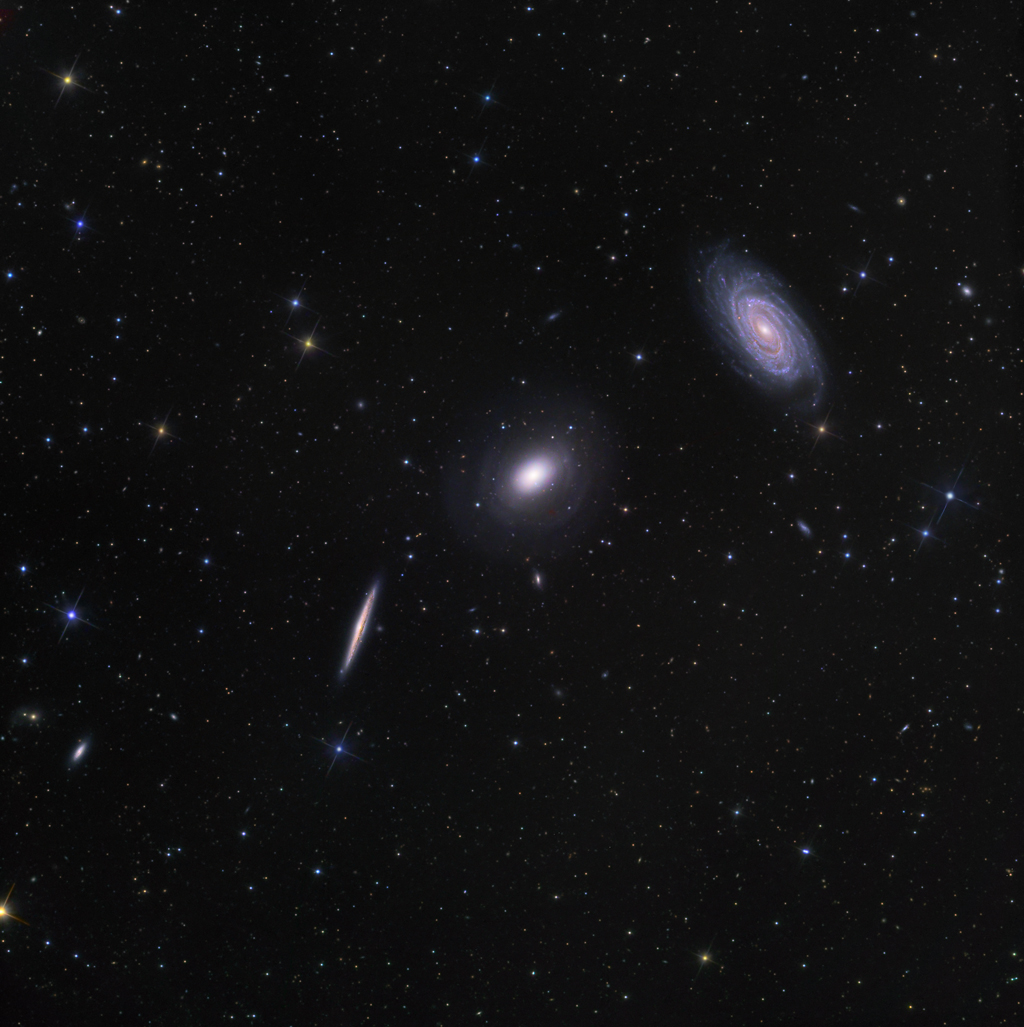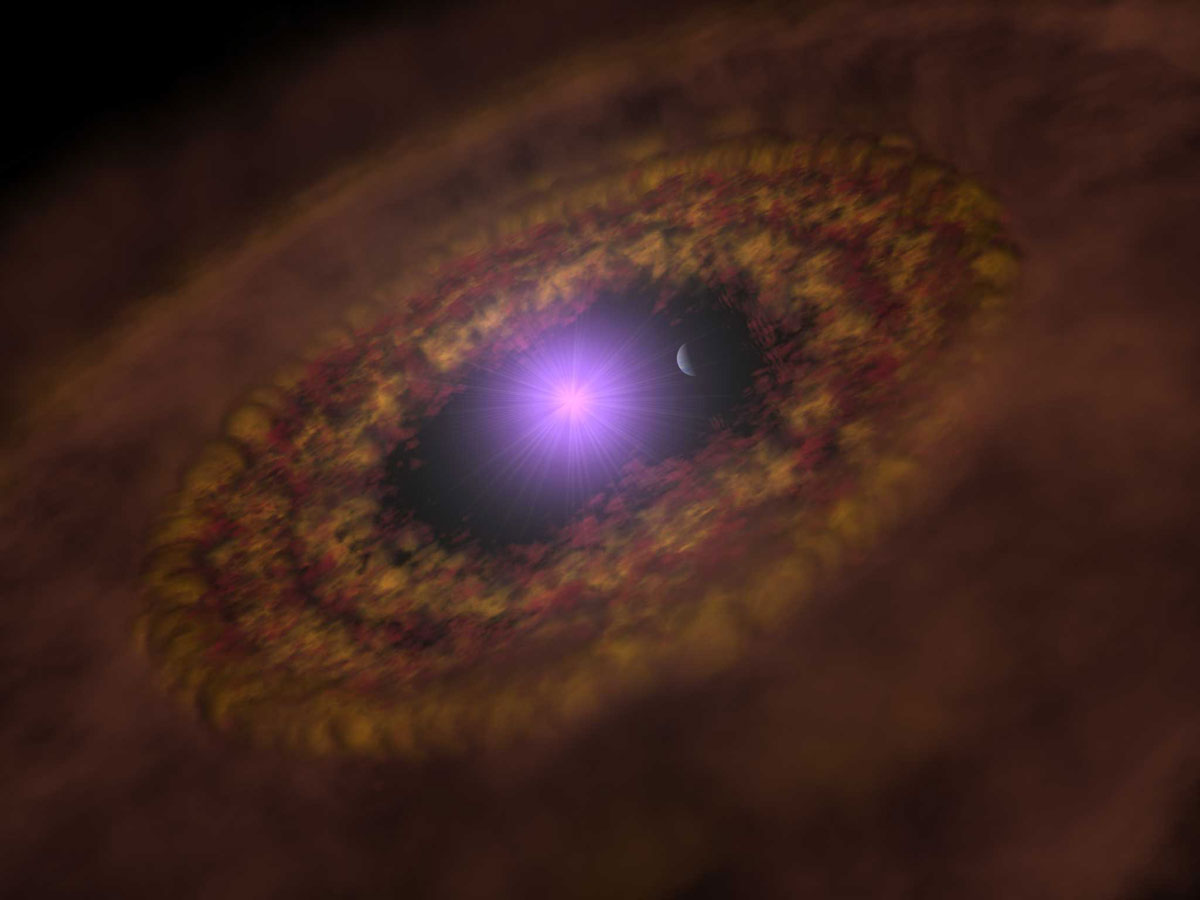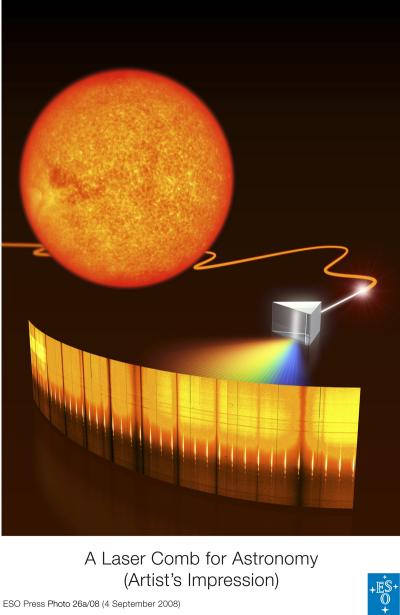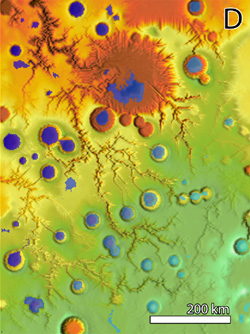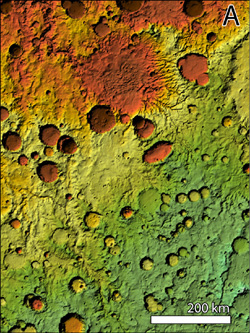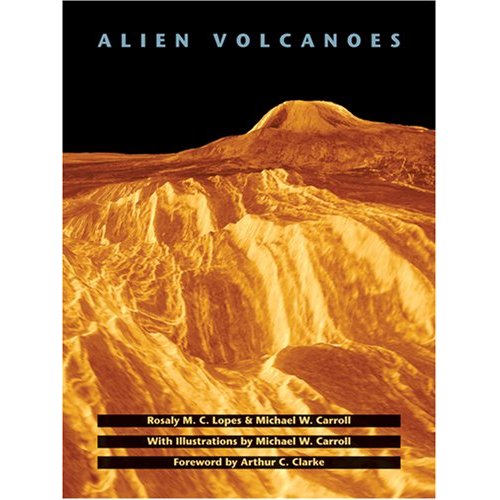[/caption]
There are wonderful tales which surround the circumpolar Draco constellation. According to Greek legend, Draco represents the dragon killed by Cadmus before founding the city of Thebes – or perhaps it represented the dragon which guarded the golden fleece and was eventually killed by Jason and his famous Argonauts. To the Romans, it was simply a creature killed by Minerva and tossed into the sky as stars to be remembered. The Egyptians called it Tawaret. But the most famous of all representations of Draco was one of the twelve labors that Hercules had to overcome. Many of us will never see the jewels that hide within the boundaries of this sprawling constellation, but thanks to the Herculean efforts of Ken Crawford – we can share in its mysteries…
To deep sky observers, the group of NGC 5985, NGC 5982 and NGC 5981 is commonly known as the “Draco Trio”. Two barred spirals at different angles and a face on elliptical all in the same field of view is a rare sight and makes for a beautiful celestial portrait. The beautiful spiral is NGC 5985. The proper designation for the elliptical galaxy is NGC 5982. The catalog number for the edge-on is NGC 5981. While these galaxies span huge amounts of light years apart, they share telescopic space at RA: 15h 38m 40s Dec: +59°21’22” as a center and share photons in the eyepiece at around 25 arc minutes. While the Draco group is far too small to be considered its own galaxy cluster and has never been classified as a compact group, oddly enough all three are around 100 million light years away from the Sol System.
I did mention there were mysteries here, didn’t I? Then let’s explore them…
Take a closer look at the grand spiral, NGC 5985. It’s a Seyfert. According to research done by Simões Lopes (et al) it may also harbor a wonderful black hole right in there with its active galactic nucleus. “This result demonstrates a strong correlation between the presence of circumnuclear dust and accretion onto the central, supermassive black hole in elliptical and lenticular galaxies. Current estimates suggest the dust settling or destruction time is on order of 108 yr, and therefore the presence of dust in ~50% of early-type galaxies requires frequent replenishment and similarly frequent fueling of their central supermassive black holes. The observed dust could be internally produced (via stellar winds) or externally accreted, although there are observational challenges for both of these scenarios. Our analysis also reveals that approximately one-third of the early-type galaxies without circumnuclear dust have nuclear stellar disks. These nuclear stellar disks may provide a preferred kinematic axis to externally accreted material, and this material may in turn form new stars in these disks. The observed incidence of nuclear stellar disks and circumnuclear dust suggests that episodic replenishment of nuclear stellar disks occurs and is approximately concurrent with the fueling of the central AGN.”
But that’s not all, because there’s a quasar there, too. According to a 2001 study done by one of my heroes – Halton Arp and David Russell; “The distribution on the sky of clusters of galaxies shows significant association with relatively nearby, large, active galaxies. The pattern is that of clusters paired equidistant across a central galaxy with the apparent magnitudes and redshifts of their constituent galaxies being closely matched. The clusters and the galaxies in them tend to be strong X-ray and radio emitters, and their redshifts occur at preferred redshift values. The central, low-redshift galaxies often show evidence of ejection in the direction of these higher redshift clusters. In all these respects the clusters resemble closely quasars which have been increasingly shown for the last 34 years to be similarly associated with active parent galaxies. New, especially significant pairings of quasars are presented here, which are, at the same time, associated with Abell clusters of galaxies. It is argued here that, empirically, the quasars are ejected from active galaxies. They evolve to lower redshift with time, forming stars, and fragmenting at the end of their development into clusters of low-luminosity galaxies. The cluster galaxies can be at the same distance as their lower redshift parents because they still retain a component of their earlier, quasar intrinsic redshift.”
Now, let’s take a look at the quiet little elliptical – NGC 5982. Just this year it was studied by Del Burgo (et al) for its dust shell. According to the report: “Shells in Ellipticals are peculiar faint sharp edged features that are thought to be formed by galaxy mergers. We use Spitzer data in the wavelength range from 3.6 to 160 μm and HST/ACS optical data. After subtracting the galaxy models, residual images are used to identify the shells. We detect for the first time shells from mid-infrared data. The very different distributions of dust, warm gas and HI gas together with the presence of shells and a kinematically decoupled core suggest a minor merger in NGC 5982.”
Ah, ha! So, it’s always the quiet ones that get ya’, huh? Then it might interest you to know that NGC 5982 may also contain its own black hole, a peculiar population of stars, a low luminosity active galactic nucleus and may have even been a product of a black hole merger! What more, new globular clusters may have formed during these interactions without the benefits of gaseous materials. Simply too cool…
Now… How about the wild looking edge-on, NGC 5981? Science loves to examine what it just can’t quite see and in the case of this highly inclined spiral, we’ve found out that the stellar disc just might be cut off – or foreshortened. According to a 2007 work done by Florido (et al); “This is the first work reporting observations of the truncation of a stellar disc, in both the optical and the NIR spectral ranges. No galaxy has been observed at both wavelengths with the required depth. The optical radial profiles of spiral galaxy discs seem to suggest a double exponential behaviour, whilst NIR profiles seem to show a real truncation. NGC 6504 has a real truncation in both the optical and the NIR radial profiles. A double exponential does not fit the observed optical profile. The truncation radius is larger in the V band than in the NIR by ~10 arcsec, about 3 kpc (equivalent to about 10%).”
But, just because its equipment is a little shorter than most, does that mean it doesn’t produce as many stars? Not hardly. It just means its peanut-shaped central bulge may be embedded in a dark halo. Thanks to the work of Joop Schaye who also took a look at NGC 5981, we know a little more about these properties. “We study global star formation thresholds in the outer parts of galaxies by investigating the stability of disk galaxies embedded in dark halos. The disks are self-gravitating, contain metals and dust, and are exposed to UV radiation. We find that the critical surface density for the existence of a cold interstellar phase depends only weakly on the parameters of the model and coincides with the empirically derived surface density threshold for star formation. Furthermore, it is shown that the drop in the thermal velocity dispersion associated with the transition from the warm to the cold gas phase triggers gravitational instability on a wide range of scales. The presence of strong turbulence does not undermine this conclusion if the disk is self-gravitating. Models based on the hypothesis that the onset of thermal instability determines the star formation threshold in the outer parts of galaxies can reproduce many observations, including the threshold radii, the column densities, and the sizes of stellar disks as a function of disk scale length and mass.”
While we’ll never see the Draco Trio in the telescope eyepiece as well as what this incredible image by Ken Crawford presents, we welcome the Dragon Slayer for the opportunity it gives us to take a closer look at another cosmic mystery. Is the Draco Group really a galaxy group? Perhaps. According to independent research papers done by both Giuricin and Garcia, this small group of friends collectively known as the NGC 5866 Group (because it’s the brightest) is located to the northwest of both the M101 Group and its companion galaxies which makes it proximity. Also nearby is the M51 Group, home to the Whirlpool Galaxy, the Sunflower Galaxy, and several others. The distances to these three groups was gathered by studying their individual members and science has found they are similar – and perhaps part of a much larger, more loose association than we’ve yet discovered.
But we’re learning…
Many thanks to AORAIA member Ken Crawford for the use of the spectacular image and the awesome research challenge it posed! My gratitude for the inspiration and the learning challenge…
